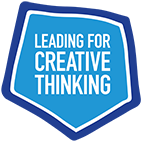Creativity and Science
Purpose
Creativity is often associated with the arts to the extent that some people assume that it does not have a place in other school subjects. An important task for anyone in a leadership role is to challenge staff to rethink practices and to create opportunities for them to try new things. This activity invites you to reflect on how scientists think, consider the overlap with the five Creative Habits and design professional learning that will encourage those teaching science or running afterschool science or engineering clubs to embed creativity in their work.
Resources and Setting Up
- Copies of the Science curriculum for the relevant key stage
- Resource 1 - Blank Scientific Habits template
- Resource 2 - Scientific Habits
- Resource 3 - Creativity and Critical Thinking in Science, Material from the State of Albert, Canada
Duration: 1 hour
Getting going
Step 1
15 minutes
In small groups take a moment to think about science and scientists. What words do you associate with science and what do scientists do? If you have a scientist in your group, start by getting the non-scientist views. Capture your thoughts.
Creative Habits
Step 2
How do scientists think and act? Using the blank Scientific Habits template (Resource 1), choose up to five habits that you associate with scientists. As well as any experience you have of classroom science, think of scientific inventions you know of and consider what these might suggest as scientific habits.
When you have agreed these turn over the Scientific Habits (Resource 2).
Do you want to change your mind about your selection of Creative Habits in the light of these ideas? If so, amend your template.
Going deeper
35 minutes
Step 3
Now turn over Resource 3.
At a high level, educators in Canada (where Creative Thinking is part of the curriculum) have mapped Creative Thinking against Science.
How could you use this in your school? What connections between Creative Thinking and Science does it stimulate in your group?
Step 4
In pairs, consider the concept of ‘split screen’ teaching - ‘split screen’ teaching is the simple but powerful idea that you need to weave opportunities for creative thinking into every subject of the school curriculum and to do so intentionally: science + collaboration, maths + inquisitiveness and so on. It invites teachers to describe two worlds: the disciplinary subject matter of the lesson and the creative habit on which they are also focusing.
Using copies of the Science National Curriculum consider how you can embed Creative Thinking in Science teaching or extra-curricular activities if you run these.
Start by identifying aspects of the curriculum where you can see how Creative Thinking and Scientific Habits seem naturally to fit together at a high level, at the level of habits. Then, stimulated by your earlier conversations, look in more detail at the curriculum and explore opportunities for split screen teaching at a more specific level.
How could you use this process with those who teach science in your school to support them to plan programmes of study which incorporate Creative Thinking in Science?
Reflecting Together
10 minutes
Step 5
What else will you need to do as leaders to support science teachers?
Could you adapt this approach for other subjects in the curriculum?
Which colleagues might be early enthusiasts for these kinds of approaches? How could you engage them?
